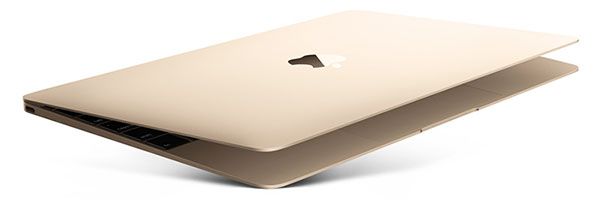Early reviewers last week weighed in on Apple’s new MacBook, and their reactions were tepid.
The new MacBook is 13.1mm thick, weighs 2 pounds, and has a 12-inch Retina display. Apple has touted it as the future of the notebook, pointing out that it had to reimagine every element to make the device lighter, thinner and better.
Reviewers praised the device’s light weight, its sharp screen, the full-sized keypad, the new Force Touch feature and even the solitary USB-C port, although it is not backward-compatible with earlier USB technologies.
“I’ve seen one, and they’re very light, their screen is small but pretty good, and you’d say that if price were no object or somebody gave you one of these things you’d use it,” said Mike Jude, a manager with the Stratecast service of Frost & Sullivan.
“It looks cool. It’s light, it’s trendy, and if you’re looking at it as a kind of a status symbol — the way you’d look at the Apple Watch — you might think having the latest and greatest might be worth the money,” he told TechNewsWorld.
“If you’re looking at it from the standpoint of utility, though, you could do a lot better,” said Jude. “It doesn’t have the most powerful processor out there, and compared to current generations, its battery is kind of a power hog.”
The Good Things
The aesthetics of the new MacBook drew the most kudos. Reviewers loved its thinness and lightness and its design.
This is what the future of laptops looks like, said Wired’s David Pierce, who wants one very badly.
The new MacBook doesn’t let users connect external peripherals, being essentially an Internet device, and thus is ahead of the trend, blazing the right path, he argued.
It is based on an Intel Core M processor, which is efficient enough that it doesn’t need a fan to cool it off.
In general, the Core M has been sluggish with mediocre battery life, but the new MacBook performs much better than any other Core M system Cnet has tested to date, wrote Dan Ackerman.
Apple “seems to have gone for simple, clean minimalist lines,” said Craig Stice, a senior principal analyst at IHS.
It “will drive this USB-C [technology],” he told TechNewsWorld.
Google’s new Chromebook Pixel incorporates USB-C too, noted Re/code’s Katherine Boehret. However, it has two of them.
The Not-So-Good Stuff
Reviewers agreed that the MacBook’s battery life could be longer.
It ran out of juice after just over five hours with the screen at full power, with power saving off and WiFi on to collect email in the background, and a loop of video playing on iTunes, Re/code’s Boehret complained.
In contrast, the 13-inch MacBook Air lasted more than 10 hours under similar testing.
Money Talks
The new MacBook’s price, beginning at US$1,300 for a device with 8 GB of RAM and 256 GB of solid state storage, is on the high end.
However, a 13-inch MacBook Air with a similar 8/256 GB configuration also costs $1,300, Cnet’s Ackerman pointed out, and a similarly configured Samsung Ativ Book 9 costs $1,400.
“Apple has the ability to sell products based on what it is, and this fits into the price range of other Apple products, which are typically on the high end,” IHS’ Stice said.
Wired Draws Sparks
Readers of the Wired review generally were incensed at what they saw as its excessively favorable tone.
“What a review,” commented tazy11. “Every deficit is actually a feature that you never knew you wanted. I hope Apple pays you well.”
Wired’s 8 out of 10 rating seemed to attract more scorn than interest.
“Underpowered CPU, lame battery, extremely overpriced, only one port that needs adaptors … . This lack of journalism integrity will be your downfall as a publication,” fumed Turbo Lover.
“Apple FanBoy here,” wrote zaxtervid. “I’ll pass on this laptop, thanks. It’s an overpriced NetBook.”
Several readers said the new MacBook amounts to an overpriced Chromebook.
“If you’re just comparing straight capability, one could say it’s a fabulously expensive Chromebook,” Jude remarked, “but it’s more capable and has more end-user security on it.”
























































> solitary USB-C port, although it is not backward-compatible with earlier USB technologies.
That is completely wrong. It is 100% backward-compatible, WITH AN ADAPTER.. Just like micro/mini-USB to USB and so on..